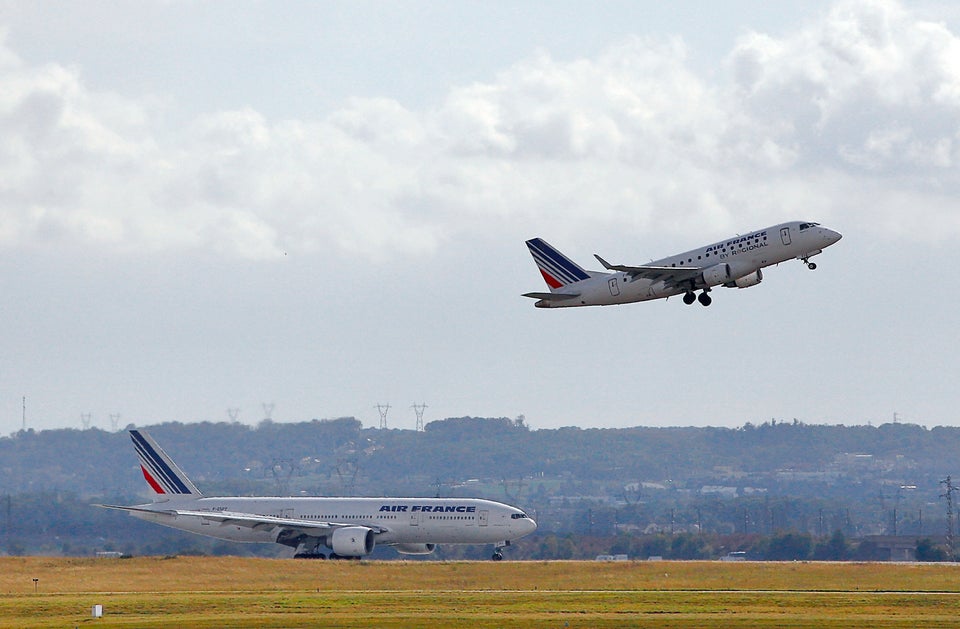Global temperatures are rising, but nothing brings global warming home to people like a really hot summer day — those few days a year when it actually feels like the planet is boiling over. But what if those rare sweltering days, over 90° or 100°F, were not so rare and began to dominate summers? That could happen if carbon emissions continue unabated.
In a new analysis, we estimate how many more “extremely hot” days different U.S. cities could feel by the middle and end of this century. Exactly how many will depend on how much higher heat-trapping gas emissions get, and it will also vary from region to region across the country.
The term extremely hot means different things in different places. In order to provide a benchmark that translated across cities, the threshold was identified as the temperature exceeded at least one time per year, on average, between 1986 and 2005, using 90°F, 100°F, and 110°F as options. For example, in Phoenix, it was 110°F; in Chicago, it was only 90°F.
The analysis showed what might be looming for the country. And that would be a plethora of sweltering summer days.
Phoenix currently averages 16 days above 110°F each year. By 2100, that number will be more than 101 days above 110°F. In other words, the mercury could top 110°F nearly every day in June, July and August in an average summer. Even by just mid-century, Phoenix could see 53 days a year above that threshold, if emissions continue to increase rapidly.
In Chicago, the hottest days of the year today are those above 90°F and the city sees about 17 of those days a year, on average. But by the end of the century, the Windy City will see a whopping 75 days above 90°, and in the shorter term, would see 45 such days by mid-century.
Above are graphs for 87 cities, illustrating how many more extremely hot days there will be, on average, in the coming decades, depending on future emissions trends.
Of course, the future number of hot days depends on future emissions. Current trends are running similar to the highest future emissions scenario defined by the Intergovernmental Panel on Climate Change (IPCC) in its Fifth Assessment Report, with greenhouse gas emissions continuing largely unabated. The IPCC offers three other scenarios, but even under the lowest emissions scenario — which involves drastic emissions reductions coming from global climate policies and widespread adoption of advanced energy technologies — the average number of extremely hot days will likely increase across the country.
However, the magnitude of change is scenario-dependent. For example, Houston currently averages about 5 days each year at or above 100 °F. Between 2041-2060, it could average more than 20 days at or above 100 °F with current emissions trends, whereas with the drastic reductions, it would average only about 9 days above 100 °F. By 2080-2099, it would average over 70 days above 100 °F if current trends continue as they have in recent decades.
Some of the other findings from the analysis include:
- New York, which currently sees 18 days above 90°F, will see more than 39 days above 90°F by 2041-2060 under the highest-emissions scenario and more than 69 days by 2080-2099.
This analysis draws on daily maximum temperature data collected from the Applied Climate Information System (ACIS, http://data.rcc-acis.org/StnData) for 1986-2005. The temperature change for 2041-2060 and 2080-2099 was calculated using a downscaled multi-model ensemble approach (Downscaled CMIP5 Climate Projections archive at http://gdo-dcp.ucllnl.org/downscaled_cmip_projections/), and the projected change for each emissions scenario was added to the current temperature (from ACIS) to get the future temperature. Mid-century predictions are for the 2041-2060 range, and end-of-century projections are for 2080-2099.
The emissions scenarios assessed are based on the four representative concentration pathways (RCPs) used by the Intergovernmental Panel on Climate Change in its Fifth Assessment Report. While RCP8.5, the highest emissions scenario, assumes greenhouse gas emissions continue largely unabated through the end of the century, RCP2.6 assumes drastic climate policy intervention and/or widespread deployment of low-emissions energy technology that leads to rapidly decreasing emissions. In between, RCP6.0 sees a growth in emissions that begins to decrease around 2060 before eventually stabilizing, and RCP4.5 sees emissions stabilize over the next 20 years before eventually decreasing.
